by Marion Patterson | May 13, 2021 | Birds, Nature
In mid-April, we got a call from a concerned Montessori teacher. Her school is in downtown Cedar Rapids amid office buildings, restaurants, and taverns. Cars constantly buzz by.
She’d spotted a hen mallard duck nesting in the school’s playground and asked what she could do to help it. She knew what a great teaching opportunity this was. Children and teachers have spent the past several weeks observing and documenting the mama Mallard. They even named her – Mallory. Her partner is dubbed Howard.
Over the years we’ve fielded many similar calls from people in urban areas spotting nesting mallards and Canada geese.
For years people have heard that transforming natural areas to cities and suburbs destroys wildlife habitat. It does, at least for wildlife that shun people. However, many wild animals increase as an area urbanizes. House sparrows, rats, and pigeons come to mind, but some other beneficiaries are more welcome.
Cedar Rapids is bisected by the Cedar River, and many ducks nest downtown. Often a hen duck will nest in a large raised concrete flower pot, or as the Montessori School discovered, in the kids’ playground.
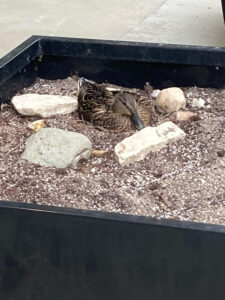
This female mallard is quite at home near the Montessori school.
Although this may seem odd, a city may be the safest nesting place. Mallards nest on the ground. Raccoons, dogs, opossums, and a slew of other predators love dining on eggs. Most duck nests out in the country get predated. All that’s left after a raccoon raid is eggshells. Fortunately, many waterfowl species renest, and usually enough nests are successful to maintain the population.
It may be that a nest in a raised concrete flower pot reduces the odds of a raccoon raid.
For many years a duck nested under a shrub near the front door of Washington High School. The hundreds of students who passed by the nest may have discouraged predators.
Canada geese also aren’t shy about people, factories, railroads, or even Interstate Highways. Many nest along Cedar Lake in an industrial area of Cedar Rapids. Normally they hide their nest, but we found one goose nesting immediately adjacent to a busy trail in plain sight.
This bird is now so numerous in many cities that they’re considered a nuisance, although we love seeing and hearing them.
So, what should someone do if they find a nesting duck or goose in a seemingly unlikely and unsafe place? The answer is simple. Just like the Montessori classes, Leave it alone, take photos, and enjoy having a beautiful and interesting animal make its home near people.
by Winding Pathways | Mar 25, 2021 | Amphibians/Reptiles, Birds, Bugs, Nature, Trees, Wonderment
Quilting and the Chesapeake Bay
Guest Blogger, Sigrid Reynolds
I have always loved the humble arts of unknown women who pieced quilts. My own attempts at the craft had resulted in exactly 10 squares in the 1980s when I had small children at home who took afternoon naps. At the same time, I started looking through the piles of quilts at antique stores in the Shenandoah Valley. It thrilled me to see the patterns, colors, and precise stitching of women from the past. So seduced was I by these piles, I knew collecting could get out of control. But then I found a Pennsylvania Dutch unquilted top in an original bold tulip design of blue, red, and yellow colors. I decided to seek and purchase only this color combination. That kept the lid on it since these colors are rare in combination.
COVID-19 Quilting
Taking up quilting again didn’t occur to me until Spring 2020 when I was asked to join a young friend’s virtual pandemic quilt circle. In a time when we all faced our own mortality and the uncertain path the pandemic and the nation would take, we needed something to calm ourselves. As a retired person, I had nothing filling my time and frankly, felt the need to leave some little part of me behind in the lives of my descendants.
The group chose a striking geometric pattern with many triangular pieces. I purchased material, cut a few triangles, and then I went rogue. My inclination was to go faster, larger and more personal since I’d found piecing tedious in those earlier tries. Besides, I am 30 years older than the members in my group so my “life” time is more limited. I found purpose in a multi-generational family vacation home on the Chesapeake Bay just begging for Aunt Sig artifacts for posterity.
A “Fishy” Quilting Inspiration
My first quilt was a re-interpretation of a fish painting that the family had owned for 90 years. The family has always asked guests to tell them how many fish they see in the painting. So, I added goldfish for a humorous twist and quilted in additional fish. In all, there are 40 fish in this quilt.
-
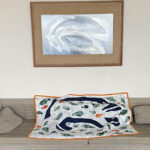
-
A humorous adaptation of the family fish painting.
-
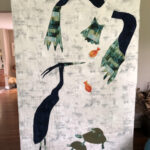
-
Remembering sunning turtles.
What came next was an urge to recognize the other birds and animals seen regularly on or near the Bay: herons in the morning and evening along with osprey all day. And then I was remembering sunning turtles in a nearby spring-fed pond. I added more goldfish and quilt fish to keep the puzzle going.
I next needed to represent the loblolly pines that line the shores of that estuary. And, of course, I needed additional visitors: raccoons, foxes, and box turtles. While quilting, I added one ghostly possum in the lower right-hand corner. And why not add some quilted poison ivy since that is always an island hazard? And yes, there are fish quilted into the water to count.
-
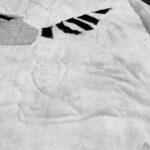
-
The beginnings of a personal quilt.
-
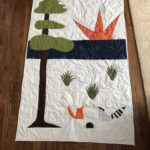
-
Capturing the sunrise
New Inspirations
Finally, as this quiet, worrisome time comes to an end, I realized that I needed to turn from nature to hail the Baltimore Light, a caisson lighthouse, that has defined the deep channel for ships going into Baltimore Harbor my entire life. Since it was winter, I recalled the two times that I had seen the Bay had frozen and decided that might be a good subject. And yes, there will be quilted fish to count under the ice floes.
Nature Continues to Inspire
I have pondered what prompts this late-in-life creativity and conclude that the pandemic opened up a fertile field in me that might have remained fallow. I, like many, turned to the nearby nature of our backyard and parks but memories of a barefoot childhood on the Bay persisted. Quilting allowed me to visit the nature of my memories.


by Winding Pathways | Mar 18, 2021 | (Sub)Urban Homesteading, Birds, Garden/Yard, Nature, Trees/Shrubs
March is a pivot month. It’s neither winter nor spring. Often called “mud season”, March is maple syruping time, but it’s also birdhouse building month at Winding Pathways.
As humans in northern climates wade through mud and long for spring, millions of birds far to the south are planning their long migration north. A few hardy waterfowl arrive as soon as the ice melts from lakes and ponds, but most birds appear, as if by magic, in April and May. We make sure our birdhouses are up before they arrive.
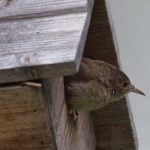
Looking out at the world.
House Wrens, Eastern Phoebes, American Robins, House Sparrows, and House Finches all nest on or near homes, barns, and garages. Although few people enjoy seeing messy House Sparrow nests tucked into nooks and crannies, most love hosting the native species as they raise the new generation outside the window.
Make Birdhouses
March is the best month to make birdhouses and restore older ones somewhat worse for the wear. Most are easy to build using simple carpentry tools. Better yet, birds aren’t fussy. Although the size of the house and the diameter of the entrance hole is important, the residents don’t care if the maker is an excellent carpenter or a novice. So, if the joints don’t fit perfectly it won’t bother birds!
Helping children make birdhouses is a fun project that involves them in nature as they learn safe tool use and basic construction techniques.
We scrounge a nearby pallet pile for free wood. Often the discarded pallets are made from boards the right width for our houses. Relatively inexpensive pine, spruce, or fir work for people who prefer to buy wood.
-
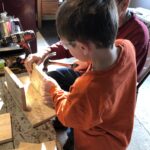
-
Working with children to make a birdhouse is rewarding.
-
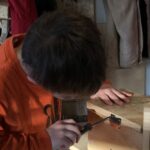
-
Children learn wood types, stages of building and how tools work.
-
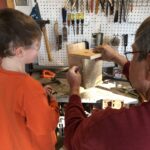
-
The birdhouse is nearly complete.
Great Resources to Guide Your Work
The best information source for virtually anything about wild birds is the Cornell University Laboratory of Ornithology. Their website gives great information on many aspects of birds, including what species likely live in an area. The site is complex but fascinating. A second website, also by the Lab, is more specific to birdhouses and nesting. The Laboratory of Ornithology site helps anyone predict what birds might migrate to their yard and when they’ll arrive. It also includes plans on how to build birdhouses. There’s even a video showing construction tips.
There’s more to birdhouses than just making one. They must be erected in the right place and height above the ground. The Lab’s website provides the right information. And, here are two tips from Winding Pathways.
Tips from Winding Pathways
- Many birdhouse plans to use nails as a hinge so the house can be opened for cleaning. We buy and use small hinges, hooks, and eyes to make opening the box to clean it easier.
- It’s tempting to attach a birdhouse to a tree using a nail or screw. That may work but eventually, the birdhouse falls off. But, the metal remains embedded in the tree. This creates danger as the tree grows around the metal, hiding it. Hitting a nail with a chainsaw is downright scary and dangerous. Also, driving a nail into a live tree can introduce diseases that could kill it. We use wire or rope to attach our birdhouses to live trees and use screws to attach birdhouses to nonliving posts and poles. One of our wren houses is suspended from a hook screwed into our porch ceiling.
Building birdhouses and enjoying a wren couple raises a brood is a fun family activity that we never tire of.
by Winding Pathways | Mar 11, 2021 | (Sub)Urban Homesteading, Birds, Pests
Millions of people love their cats. Some 36% of households keep an average of two cats. They are the second most popular companion animal in the United States, lagging only behind dogs.
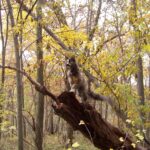
Cats decimate bird populations.
Some cats cause problems, especially when owners allow them to free-range the neighborhood. According to the American Bird Conservancy, they kill 2.4 billion birds a year and may be a significant cause of the decline of many species.
Catios to the rescue!
A growing number of cat lovers, many who also enjoy bird watching, recognize the problem and are increasingly adding a catio to their home. Wonder what it is???? It’s simply an enclosure that allows the family cats to enjoy fresh air, sunshine, and a bit of adventure without allowing them complete access to the neighborhood.
Many catios are enclosed patios, which spawned the name, that let cats play outdoors while their owners enjoy lounging or socializing nearby. They are relaxing places for both species. Other catios are small and positioned outside windows. Catios can be either purchased or homemade and often an existing patio can be modified into one.
Safety First!
Although cats love roaming the neighborhood, it is not a safe place. They pick up ticks and transfer them to humans, suffer accidents, are killed by cars as they cross streets, and are taken by predators.
A catio is a good solution to several problems. It allows cats to enjoy the outdoors safe from cars and predators in a place where they can’t kill birds. And, the owners always know where their cat is.
Harmony
An array of catio photos is visible on Catio Spaces. Many other websites feature them. Catios are a great way for cat lovers to show care of wildlife species, keep their cats safe, and live in peace with human neighbors who are frustrated when they spot a feline stalking birds under their feeder.
by Winding Pathways | Feb 18, 2021 | Birds, Geology/Weather
As we ate breakfast during the deep freeze that descended on February 7th six wild turkeys trudged through the snow from nearby woods and feasted on corn scattered under our bird feeders. It was 20 below zero – genuine 20 below. With the wind chill, the air was even colder.
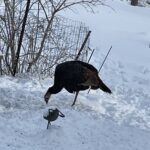
Warming toes.
The turkeys each stood on one leg as they pecked corn. Every once in a while, they alternated legs. One leg was always holding the bird upright while the other was tucked in the bird’s feathers. We wondered how they do this, so we went to our favorite new bird book, David Allen Sibley’s, What It’s Like to Be A Bird. According to him, birds have several adaptations that make it possible.
Here’s what he wrote, “The center of mass on their body is below the knee and a knob on the pelvis prevents the leg from angling any higher. Balancing on one leg requires angling that leg so that the foot is directly below the body, and with the leg essentially locked in position, and the body leaning against the leg, tiny adjustments of the toes are all that’s needed to stay upright.”
We often wonder how ducks and geese keep their legs and feet from freezing when swimming in frigid water or standing on ice. They have a useful adaptation. A bird’s leg is high, muscled, and covered with feathers. What we see that looks like a naked leg is actually a modified ankle, containing bones and tendons yet lacking blood vessels. So, the vascular area remains warm beneath feathers as the bird stands on the ice.
David Allen Sibley
We had the good fortune to chat with David Allen Sibley after he gave a presentation at the Outdoor Writers Association of America conference a few years ago. An astute ornithologist, writer, and artist, his books on bird identification and behavior, and his tree identification book, are always close at hand in our home. We’ve learned much from him.
Birds Need Grit in Winter
Most bird species need to occasionally eat tiny pebbles. These end up in the gizzard, a powerfully muscled pouch, where pebbles act like grindstones reducing hard seeds into a slurry for digestion.
During periods of snow and ice birds have a tough time finding grit, so about once a week we toss grit beneath the feeders. Sand works, but we usually use fine and medium-sized grit sold to help chickens digest their feed. Once the snow melts there’s no need to add grit, as birds easily find plenty of natural tiny pebbles.
-
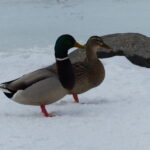
-
Adapted to the cold
-
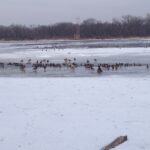
-
Weather adaptations
by Winding Pathways | Oct 8, 2020 | (Sub)Urban Homesteading, Birds, Garden/Yard, Nature
The August 10 derecho changed Cedar Rapids, and Winding Pathways wasn’t spared. We lost 47 of our 53 large trees during the 40-minute windstorm. It greatly altered our restoration plans. Here’s what we did or plan to do in response to the loss of trees.
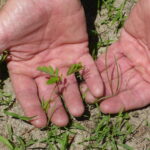
Prairie plant
New prairie plot: We planted this in early May. As expected, we only saw a glimpse of prairie plants in its first growing season, although early prairie plants give us promise that many more will appear next year. We will try to burn it either this fall or early next spring.
The derecho helped the prairie by felling or breaking four Douglas firs, one black oak, and one green ash. Two of these trees cast some morning shade on the prairie. The rest shaded it some in the late afternoon. They’re gone, so the site will enjoy more sunshine, and prairie loves sun. We mourned the tree loss but the prairie will benefit.
The trees didn’t go easily. Several tumbled into the prairie. They were big and filled with branches, leaves, and needles. We prioritized removing them. Many chainsaw and brush hauling hours later we had the trees moved into a big brush pile in the back. The sun now shines on the prairie planting. We’ll keep you posted.
-
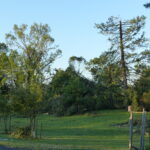
-
The firs and oak smothered the emerging prairie.
-
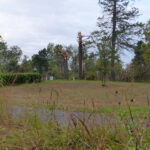
-
The firs shaded the prairie. Now more sun will shine.
Derecho Creates Opportunity
After we cleared fallen trees from the prairie, we turned to many trees that tumbled down on the north and east ends of our land. It’s taken hours to cut shattered trees and cut pathways through fallen logs so we can walk our own land easily. This land was once shady. Now the sun hits the ground. The storm transitioned the land from dense forest to savanna – a landscape of occasional trees and rich plant growth hugging the ground. Wildlife will transition as the habitat changes. Because of this change in the forest, some bird species may decline temporarily and others will thrive.
Open woodland birds: Robins, cardinals, white-eyed vireos, flickers, and Downey, red-bellied, and red-headed woodpeckers.
Mature forest birds: Scarlet tanagers, ovenbirds, wood thrushes, and pileated and hairy woodpeckers.
Shade and Sunshine
We didn’t lose all our forest trees. Just most of them. The loss of shade creates opportunities for ground-hugging plants to thrive, including baby trees. We’re already found some tiny black raspberry plants growing and many oak and hackberry seedlings.
To make sure that appropriate native savanna plants establish in the now sunny areas we ordered a native seed mix from Pheasants Forever that we’ll plant this fall.
We will keep you posted on changes in our prairies and new savanna.
















